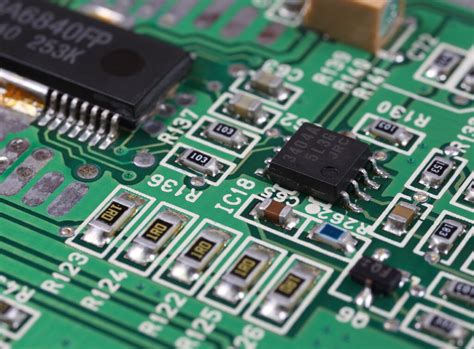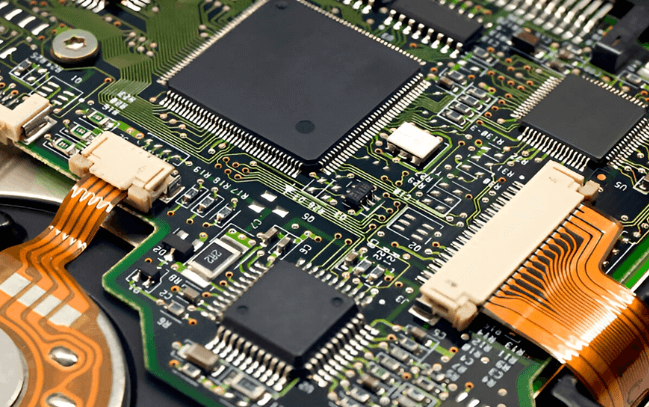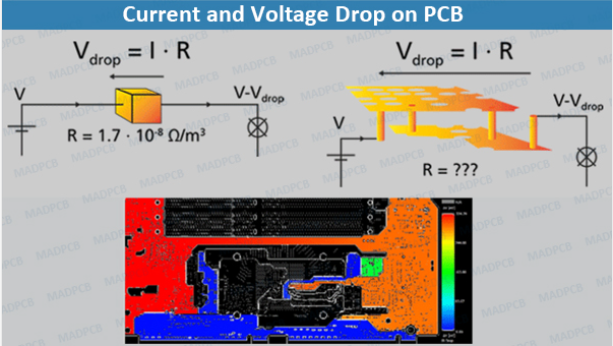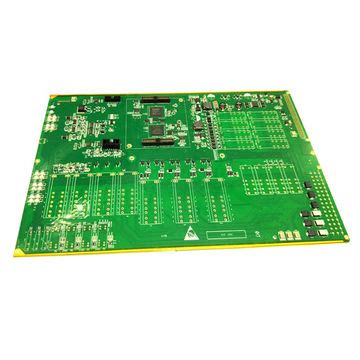Effective Handling of Analog and Digital Sections in PCBs: Managing Analog and Digital Grounds
Introduction
Printed Circuit Board (PCB) design has become increasingly complex as modern electronic systems integrate both analog and digital circuitry on the same board. The coexistence of these two fundamentally different domains presents significant challenges in maintaining signal integrity, minimizing noise, and preventing interference. This paper explores best practices for partitioning analog and digital sections in PCB designs and provides comprehensive guidance on managing analog and digital grounding systems effectively.
Understanding Analog and Digital Circuitry
Characteristics of Analog Circuits
Analog circuits process continuous signals that represent real-world phenomena such as temperature, pressure, or sound. These signals are typically low-voltage and highly susceptible to noise and interference. Key considerations for analog circuits include:
- High sensitivity to noise (often in microvolt or millivolt ranges)
- Continuous signal representation
- Susceptibility to crosstalk and electromagnetic interference (EMI)
- Requirement for stable reference voltages and clean power supplies
Characteristics of Digital Circuits
Digital circuits operate with discrete voltage levels representing binary states. While more robust against noise due to their noise margins, digital circuits generate significant high-frequency noise:
- Discrete signal levels (typically 0V and 3.3V/5V for modern logic)
- Fast switching edges generating high-frequency harmonics
- Lower sensitivity to noise (within specified noise margins)
- Generation of significant ground bounce and power supply noise
Partitioning Analog and Digital Sections
Physical Layout Considerations
Proper physical partitioning is the foundation for successful mixed-signal PCB design:
- Spatial Separation: Maintain adequate distance between analog and digital sections to minimize coupling. A general rule is to keep them at least 0.5 inches apart for moderate-speed designs.
- Component Placement: Group analog components together and digital components together, creating distinct zones on the PCB.
- Signal Flow Optimization: Arrange sections to create a linear signal flow from analog inputs through ADCs to digital processing, avoiding crossed or looping signal paths.
- High-Speed Digital Isolation: Place particularly noisy digital components (clocks, high-speed processors) farthest from sensitive analog components.
Routing Considerations
- Layer Stackup Strategy:
- Dedicate adjacent layers to orthogonal routing directions to minimize crosstalk
- Use internal layers for critical routing with reference planes
- Consider microstrip or stripline configurations for sensitive traces
- Trace Routing Rules:
- Avoid parallel routing of analog and digital traces
- Maintain 3× rule: keep traces separated by at least three times the dielectric thickness
- Route sensitive analog traces first, followed by less critical signals
- Crossing Techniques:
- When analog and digital traces must cross, do so at 90° angles
- Use different layers with a ground plane between them for crossing traces

Grounding Strategies for Mixed-Signal PCBs
Understanding Ground Noise
Ground noise in mixed-signal systems primarily originates from:
- Digital Ground Bounce: Rapid current changes (di/dt) in digital circuits causing voltage fluctuations in ground paths
- Return Current Paths: Inadequate return paths forcing currents to take unintended routes
- Common Impedance Coupling: Shared ground paths between analog and digital circuits
Ground Plane Approaches
- Single Ground Plane Approach:
- Uses a unified ground plane for both analog and digital circuits
- Requires careful partitioning and star-point grounding
- Benefits from lower impedance but needs meticulous layout
- Best suited for low-to-medium frequency designs
- Split Ground Plane Approach:
- Physically separates analog and digital ground planes
- Connects planes at a single point (usually beneath ADC/DAC)
- Reduces common impedance coupling but can create antenna effects
- Requires careful implementation to avoid creating worse EMI problems
- Hybrid Approach:
- Uses multiple ground regions with controlled connections
- Implements “moats” and “bridges” for critical sections
- Provides flexibility but increases design complexity
Best Practices for Grounding
- ADC/DAC Grounding:
- Treat converter chips as boundary components
- Connect analog and digital grounds at the converter
- Use short, wide traces or vias for ground connections
- Star Grounding:
- Establish a central ground point for the system
- Route ground connections radially from this point
- Particularly effective for power supply grounding
- Return Path Management:
- Ensure every signal has a clear, low-impedance return path
- Avoid slots or splits in ground planes that block return currents
- Provide adequate via stitching for multilayer boards
Power Supply Considerations
Power Plane Segmentation
- Separate Analog and Digital Power Planes:
- Use different voltage regulators for analog and digital supplies
- Implement proper filtering for analog power rails
- Decoupling Strategies:
- Place decoupling capacitors close to IC power pins
- Use multiple capacitor values in parallel (e.g., 0.1μF and 10μF)
- Consider ferrite beads for additional filtering
Power Supply Isolation
- Digital Power Isolation:
- Use separate regulators or LDOs for noisy digital circuits
- Implement π-filters for sensitive digital components
- Analog Power Conditioning:
- Employ low-noise linear regulators for analog supplies
- Use RC or LC filtering for critical analog circuits
- Consider active filtering for ultra-sensitive applications

Signal Integrity Techniques
Analog Signal Protection
- Guard Rings:
- Surround sensitive analog traces with grounded guard rings
- Particularly effective for high-impedance nodes
- Shielding:
- Use grounded copper pour around critical analog sections
- Implement shielded enclosures for extremely sensitive circuits
- Differential Signaling:
- Use differential pairs for critical analog signals
- Maintain tight coupling between pair members
Digital Signal Management
- Controlled Impedance Routing:
- Match trace impedance to driver/receiver specifications
- Pay special attention to clock signals
- Termination Techniques:
- Implement proper termination for high-speed digital lines
- Use series termination for point-to-point connections
- Consider parallel termination for multi-drop buses
Practical Implementation Guidelines
PCB Stackup Recommendations
A typical 4-layer mixed-signal PCB stackup might include:
- Top Layer: Component placement and signal routing
- Inner Layer 1: Ground plane (possibly split)
- Inner Layer 2: Power planes (segmented)
- Bottom Layer: Additional routing and ground pour
For more complex designs, 6 or 8-layer stackups provide better isolation and routing options.
Component Selection Considerations
- ADC/DAC Selection:
- Choose converters with appropriate resolution and sampling rates
- Prefer components with differential inputs for better noise immunity
- Passive Components:
- Use high-quality capacitors for analog filtering
- Select resistors with appropriate tolerances and temperature coefficients
- Clock Sources:
- Use low-jitter oscillators for sampling clocks
- Consider spread-spectrum techniques for digital clocks
Verification and Testing
Design Verification Techniques
- Simulation:
- Perform signal integrity simulations before fabrication
- Analyze power distribution network (PDN) impedance
- Prototyping:
- Build test boards to verify grounding schemes
- Include test points for critical signals
Measurement Techniques
- Ground Noise Measurement:
- Use high-bandwidth oscilloscopes with differential probes
- Measure between various ground points to identify noise
- Spectrum Analysis:
- Perform FFT analysis to identify noise sources
- Look for digital clock harmonics in analog sections

Common Pitfalls and Solutions
Frequent Design Mistakes
- Inadequate Ground Connections:
- Solution: Ensure multiple vias for ground connections, especially for high-current paths
- Improper ADC Grounding:
- Solution: Follow manufacturer recommendations precisely for converter grounding
- Over-Splitting Ground Planes:
- Solution: Maintain continuous ground reference where possible, use careful splits only when necessary
- Ignoring Return Paths:
- Solution: Always analyze the complete current loop for critical signals
Advanced Techniques
Multi-board Systems
For systems with separate analog and digital boards:
- Inter-board Connections:
- Use shielded cables for analog signals between boards
- Implement proper ground referencing between boards
- Chassis Grounding:
- Establish a single chassis ground point
- Avoid ground loops between boards
High-Speed Design Considerations
For designs with high-speed digital signals (>50MHz):
- Impedance Control:
- Strictly control trace impedance and termination
- Use 3D field solvers for complex structures
- Via Management:
- Minimize via transitions in high-speed paths
- Use via stitching for ground connections

Conclusion
Effective handling of analog and digital sections in PCB design requires a systematic approach that considers partitioning, grounding, power delivery, and signal integrity. While the single-ground-plane approach has gained favor in many modern designs, the optimal solution depends on specific application requirements, frequency ranges, and performance targets. By implementing the techniques discussed—careful physical partitioning, proper grounding strategies, adequate power supply filtering, and attention to signal routing—designers can successfully integrate analog and digital circuits on the same PCB while maintaining signal integrity and minimizing interference.
The key to success lies in understanding the current paths in the system, minimizing common impedance coupling, and providing clean reference planes for both analog and digital circuits. As mixed-signal systems continue to evolve with higher speeds and greater integration, these grounding and partitioning principles remain fundamental to reliable PCB design.







